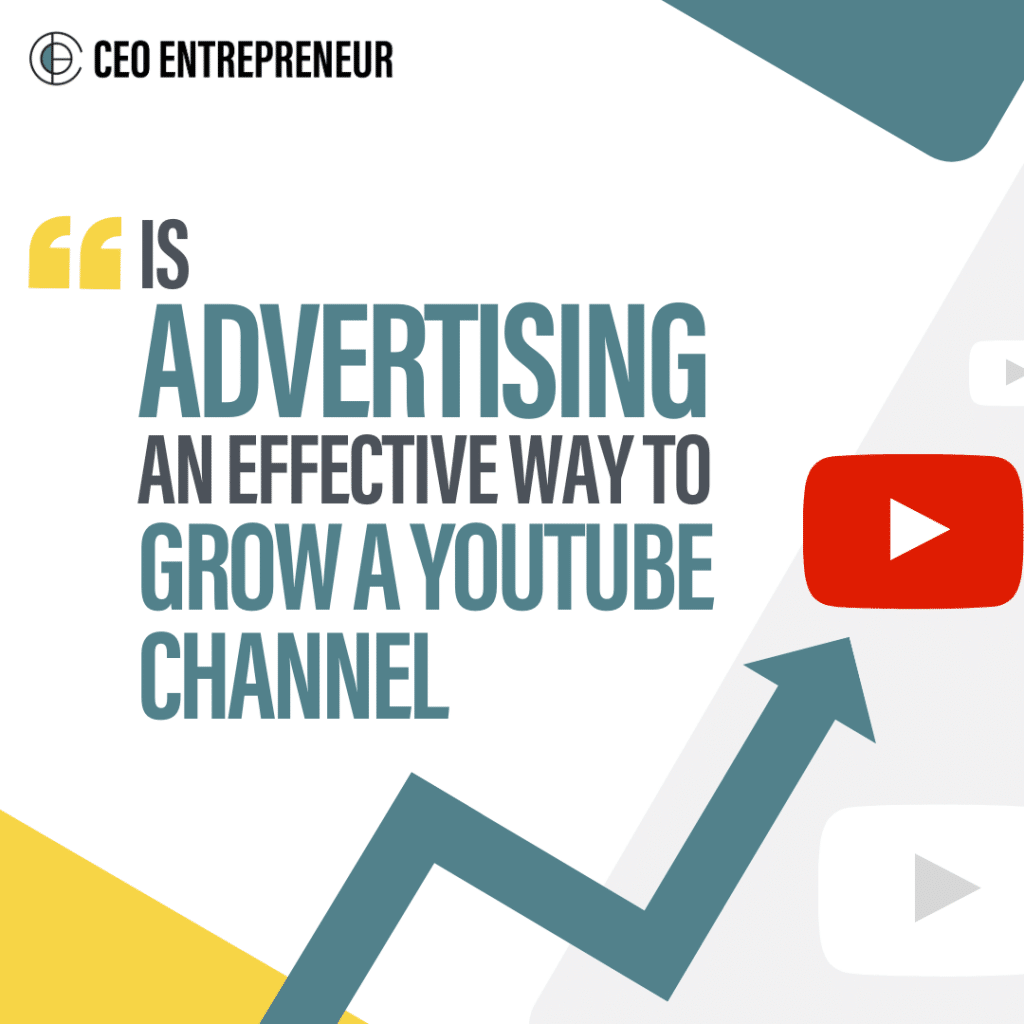Is YouTube advertising worth it? Or is it a complete waste of time, money, and effort? Yes, YouTube is a powerful branding and marketing tool, and yes, it has the potential to get your videos in front of a target audience. However, don’t assume that advertising on YouTube will skyrocket your views and subscriber count overnight (if only, right?).
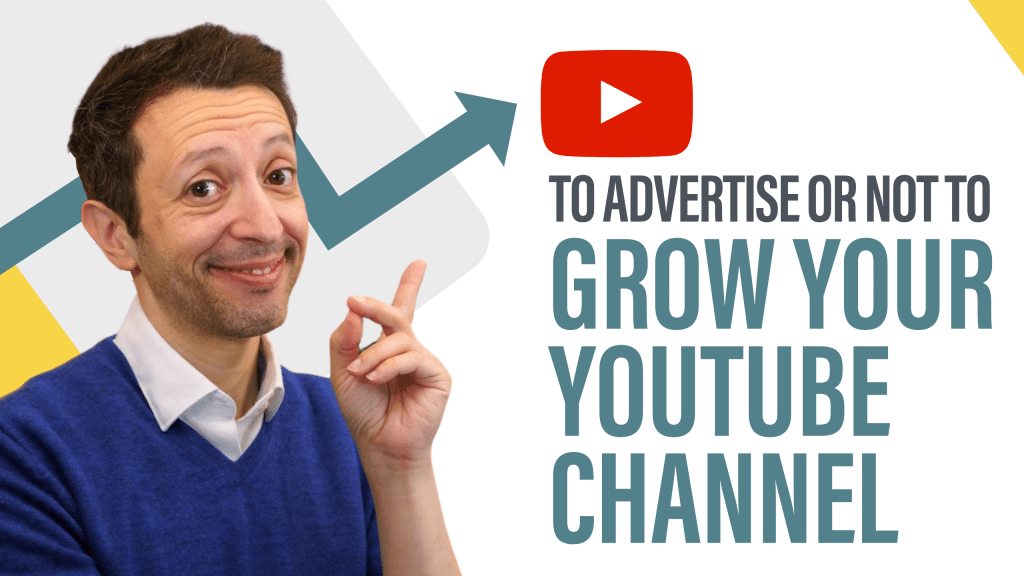
Unfortunately, it rarely happens that way. Like most marketing tools, YouTube advertising takes a lot of time and strategic planning to get right. It’s not as easy as selecting your best video to advertise to the world, and suddenly it’s gone viral, your revenue is through the roof, and you’re “YouTube famous.”
As I write this post, I have been active on YouTube for a little over three months. I recently dipped my toes in the gigantic ocean that is YouTube advertising, and I did an experiment of my own. I advertised one of my videos, and let’s just say that the results were… interesting.
As always, I’m an open book, and I’m going to let you know precisely what happened when I advertised my video on YouTube. You’ll get a behind-the-scenes look at my channel’s YouTube Analytics, including the good, the bad, and the downright ugly.
Speaking of YouTube Analytics, why not also read my previous blog about How To Use YouTube Analytics To Grow A YouTube Channel…
So, if you’re ready to find out whether or not you need to advertise to grow your YouTube channel, watch the video below or keep reading!
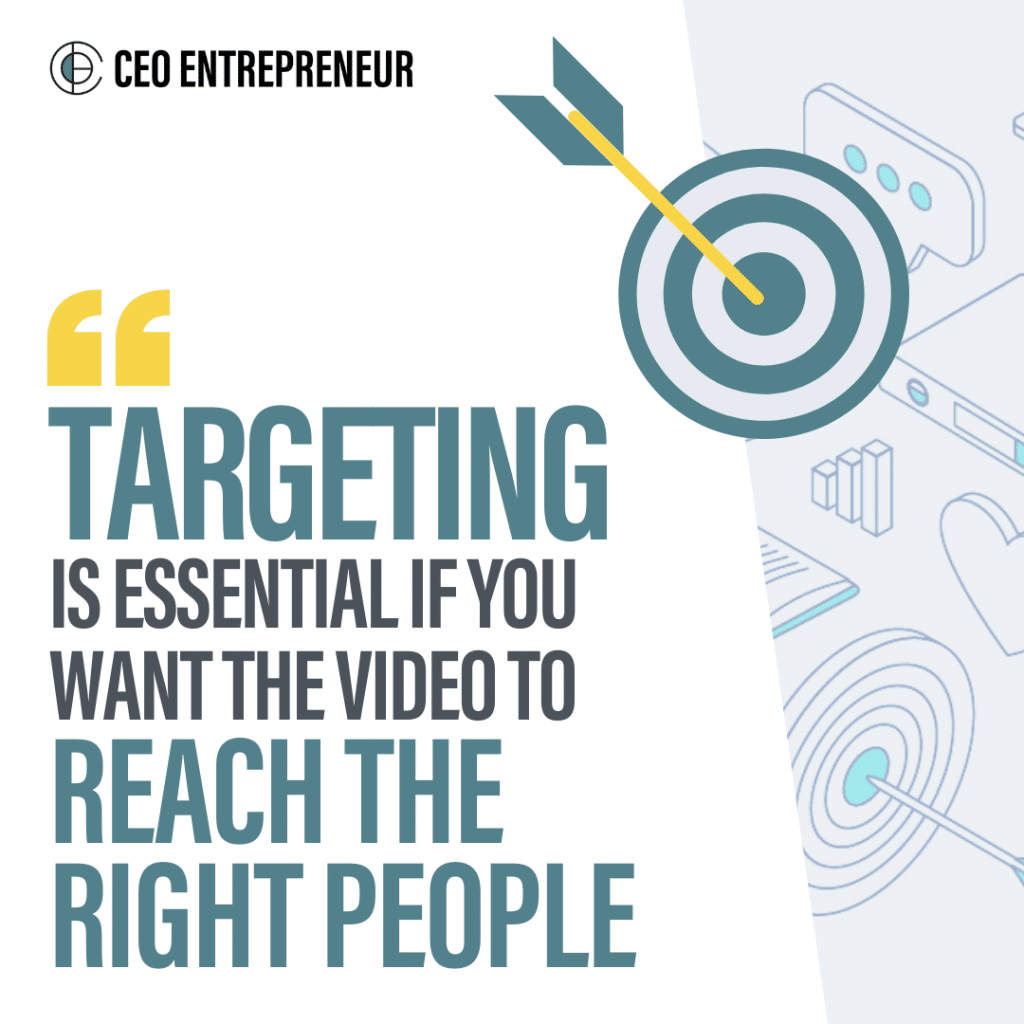
Why consistently uploading new video content is so important
Let’s get straight into the good stuff, and let’s see how my channel’s views have progressed lately. Each time I release a new video, there is a corresponding spike in views.
To maintain views, I need to be consistent. If you have a YouTube channel, showing up consistently is so important. You need to prove to the YouTube gods that your channel is consistent by continuously uploading fresh content.
At the moment, I release one video per week. It’s not a bad schedule, but I know I can do more. But first, I want to make sure that my workflow is flawless so that when I’m ready to post two or even three videos a week, there won’t be room for any hiccups. For now, this steady pace of one video a week is working very well for my channel. Plus, it gives me time to understand what videos are receiving the most engagement, what topics my audience wants to see next, and so on.
YouTube Analytics shows you how many views your videos have, your average watch time, and subscriber count (see image below).
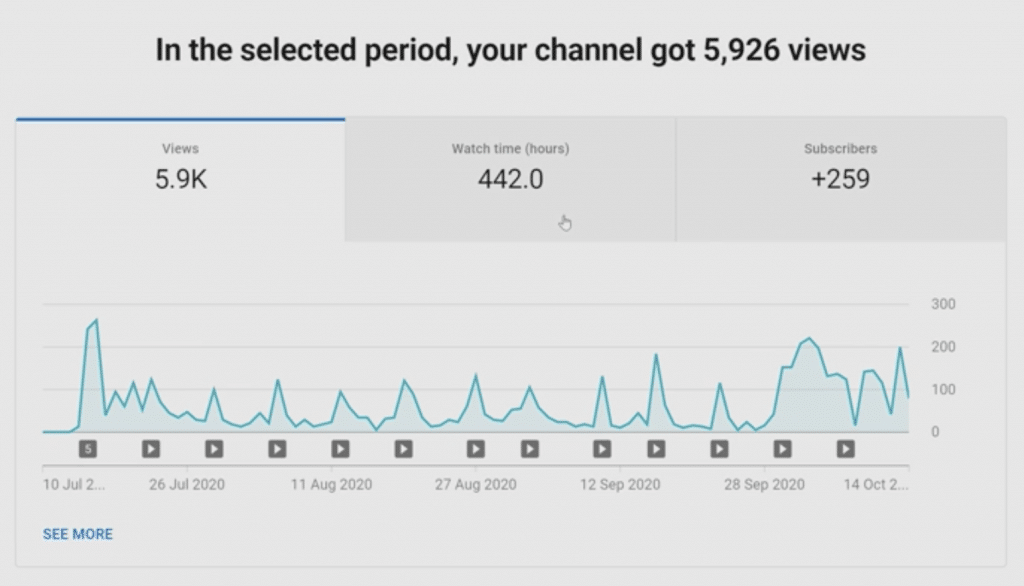
As you can see, we have 259 subscribers as it currently stands and 442 hours of watch time. We need at least 1000 subscribers and 4000 hours of watch time to monetise our videos. So, we are about 25% of the way there with subscribers and 10% with watch time, which is excellent progress if you ask me.
How my advertised video performed
One of my videos has had a much more significant spike in views than the other videos, and this was the video that I decided to advertise. I started running Google ads on the video to display within YouTube as a display ad rather than a stream ad. You know, the type of ads that appear before you can watch the video you want to watch? Well, I didn’t want it to be one of those ads. I wanted mine to show as a display ad.
The nice thing about this type of advertising is that you only pay each time somebody clicks on the ad rather than paying for each impression. Some people stay clear of doing content ads because it supposedly affects watch time and audience retention. Nonetheless, I went ahead and did it anyway.
So, how did my video advertising experiment turn out? Well, let’s find out, shall we?
Audience retention
My audience retention is around 40% the whole way through the video, and that’s without any advertising. I lost some audience members at the beginning of the video, which is normal, and usually, they’re the people who click on the video, watch it for a little bit, decide it’s not for them, and bounce off. No big deal, I don’t take it personally.
When I started to advertise the same video, something surprising happened. Only 10% of the audience stuck around until the end of the video (ouch!).
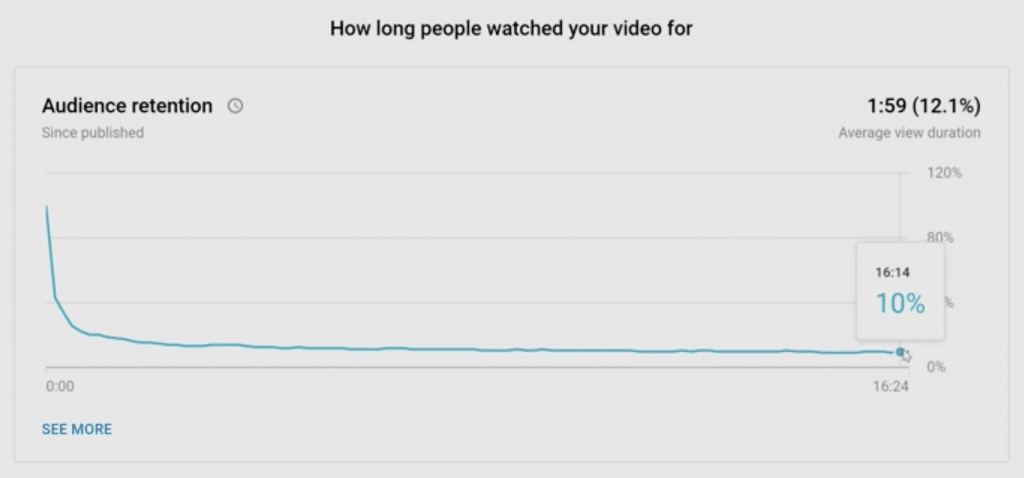
It’s horrendous. I mean, I paid to advertise the video and ended up having a lower retention rate. How does that even happen? After I recovered from the initial shock, I realised the decreased retention was because the video attracted the wrong audience.
I also discovered that YouTube differentiates between organic audience retention and retention from paid advertising. This is something that I’m going to look into further.
Another thing I wanted to talk about is the relative audience retention rates.
Below, you can see the relative audience retention rates of both organic and display ads. People who found my video organically were more likely to watch the video the whole way through. The display ads have a slightly lower retention rate, but it’s still average or above average in the grand scheme of things.
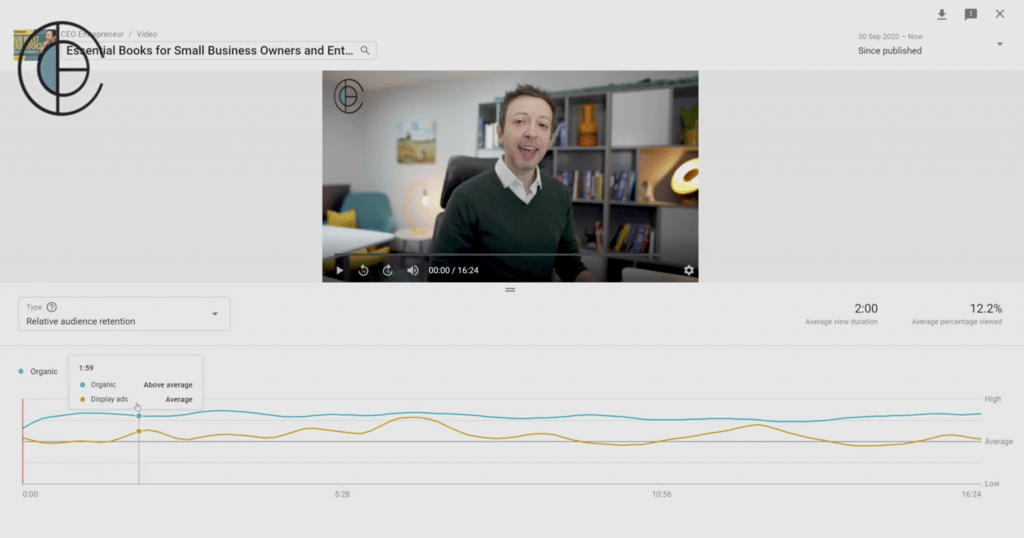
Views and monetisation
We have 442 hours of public watch time but what’s interesting about this is that YouTube is not counting the hours of watch time gained from the ads as overall public watch time. There are around 20 hours of watch time from the ads. However, that time wasn’t added to the 442 hours. This tells me that if you want to run ads on your YouTube videos to increase watch time, that’s not going to work.
Now, let’s take a look at the Google Ads data to get a better idea of what’s going on with this video advertising experiment:
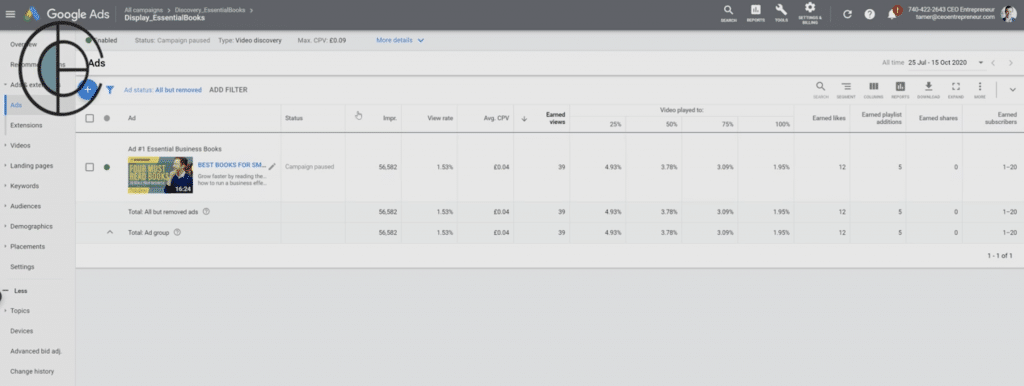
As you can see, the ad was put in front of 56,000 people, and we had a view rate of 1.53%. This view rate is lower than my usual click-through rate of around 5%, which is disappointing because it tells me that the ad is being shown to the wrong people.
The collected data for earned views caught my attention. Earn views are views where somebody has clicked your ad, watched the video, visited your channel, and then watched another video. That view is counted as an organic video because they weren’t shown an ad to watch the second video. So, according to Google Ads, we got 39 earned views from this single ad campaign.
Subscribers
We usually get around two to three new subscribers per video. However, the video that we advertised gained 11 new subscribers, which is a big jump even though they’re still relatively small numbers.

So, what does this jump in subscribers mean? It shows that around 11 people who clicked on the ad and watched the video decided to subscribe. However, that number does not count people who may have watched this video, watched another video, and then subscribed elsewhere. So, the number of subscribers might be even higher than what we can see from YouTube analytics on this particular video.
Keywords
Interestingly, we can also view the keywords that people searched for when they found my video. From this, we can see the view rate, average click-through rate, and much more. This data is valuable because it helps me understand my audience and the people who are watching my videos.
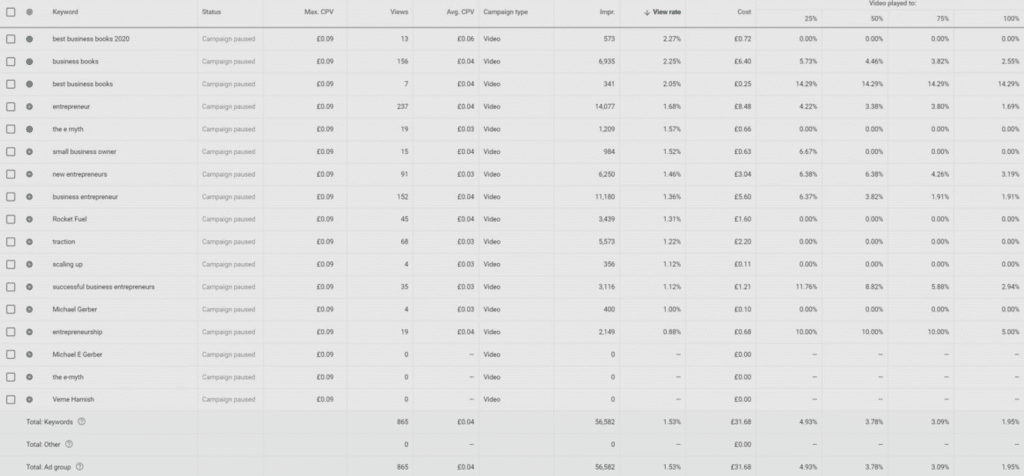
Demographics
Google Ads displays the demographics of people who watched the video. I find this extremely interesting because it tells me so much about who clicked on my ad.
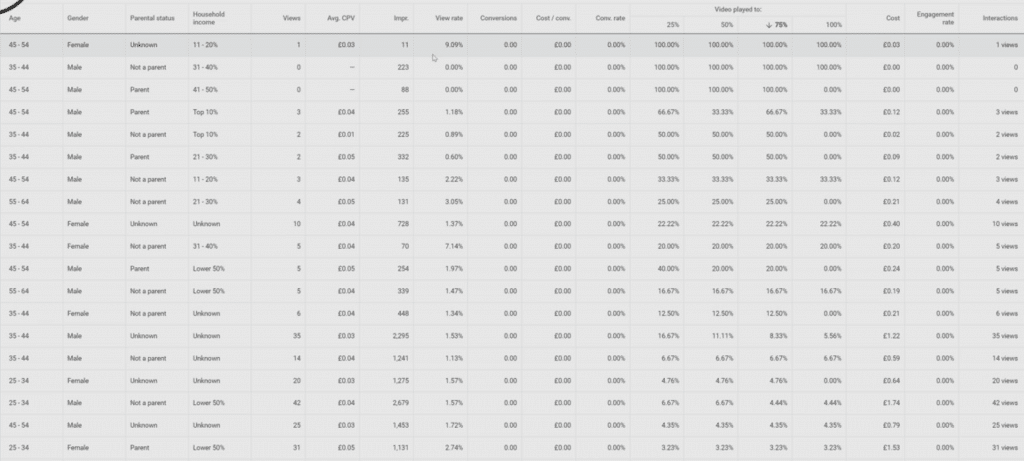
You can pinpoint who watched 100% of the video, which turned out to be females from age 45 to 54 and males between the ages of 35 and 44. You can start to use this data to fine-tune your video ads in the future so that you can target people who are more likely to watch your video. You can also add a list of exclusions that tells YouTube not to show your video to a particular audience.
To advertise… or not advertise?
So, that’s all I’ve got to show you from my advertising experiment. Do you think it was a success or a massive fail? I have learned so much from this experience, and it was worth it just to get the data that tells me who is watching my channel, who’s interested in it, who’s not interested in it, and so on.
If you decide to advertise your YouTube video, make sure that you target your ads and keep track of your ROI. Each ad needs to have a purpose. So, clarify what you hope to get from the ad. Do you want more views and engagement? More subscribers? Whatever the case may be, you’ve got to make sure that you target your ads to suit your purpose and your target audience.
Make sure to subscribe to my YouTube channel for more videos!
